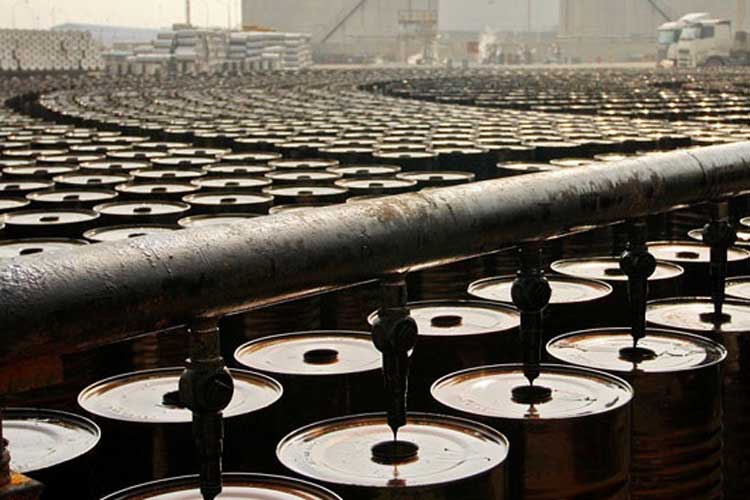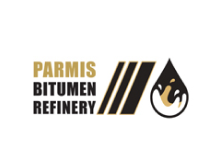In today’s industrial world, bitumen production is one of the most essential processes related to infrastructure.
From road construction to manufacturing durable waterproofing materials, this substance is indispensable. This article explains the key processes of bitumen production and related technical points. Stay with us for practical and useful information.
How is Bitumen Produced from Crude Oil?
In this process, crude oil is first heated in an atmospheric distillation column to a temperature of 300–350°C. At this stage, lighter components such as gasoline and kerosene are separated from the heavier fractions. The remaining materials, including bitumen and other heavy components, are discharged from the bottom of the column. The price of 85/100 bitumen also depends on the quality of this process and the type of raw material used.
To achieve better quality, these residues are transferred to a vacuum distillation column. In this unit, by reducing the pressure and increasing the temperature to above 400°C, volatile materials are separated. This stage is designed to prevent thermal cracking and optimize the quality of the bitumen. The final product discharged from the bottom of the column is raw bitumen, which serves as the feedstock for producing various bitumen grades.
Main Grades of Produced Bitumen
| Main Application | Key Properties | Bitumen Grade |
| Asphalt production in temperate regions | High flexibility | 85/100 |
| Construction in tropical regions | Greater resistance to temperature changes | 60/70 |
| Road base and airport runways | High strength and adhesion | 40/50 |
| Specialized industrial and heavy-duty uses | High hardness and load-bearing resistance | 15/25 |
Introduction to Main Bitumen Production Methods
Bitumen production from crude oil is a major industrial process used for manufacturing asphalt and building waterproofing materials. There are two main production methods: distillation and air blowing. The choice between them depends on the desired bitumen type and its application, with each method offering specific properties.
Crude Oil Distillation
Distillation is the first stage of bitumen production. In this process, crude oil is fed into a distillation column and heated to high temperatures (around 350°C). Lighter fractions such as gasoline and diesel are separated from the heavier ones. The residue—known as straight-run bitumen—is collected from the bottom of the column and serves as the base material for various grades, including 85/100, one of the most widely used grades.
Air Blowing Process
In the air blowing process, air is injected into the straight-run bitumen to improve its physical and chemical properties. This step, also known as oxidation, increases adhesion, temperature resistance, and durability. Viscosity-grade bitumen is one of the products obtained through this method, making it highly suitable for industrial and infrastructure applications. The process requires precise control of temperature and time to ensure optimal product quality.
Continuous vs. Batch Bitumen Production
Bitumen can be produced using either a continuous or batch process, each with its advantages and limitations. The choice depends on production capacity, desired bitumen grade, and cost considerations.
Continuous Process: Suitable for large-scale production. Straight-run bitumen is continuously fed into distillation and air-blowing units, and the final product is continuously extracted. This method offers better control over product quality and is ideal for producing PG bitumen (performance-grade).
Batch Process: Raw materials are processed in discrete loads. After completion, the final product is extracted before starting a new batch. This method is preferred when producing a variety of specialized grades for specific construction or infrastructure projects. However, it requires more time and has higher operational costs.
Factors Affecting Bitumen Quality
Bitumen quality depends on several parameters that must be carefully controlled during production:
- Processing Temperature: Optimal temperatures in distillation and air blowing improve bitumen properties.
- Air Blowing Time: Longer blowing time enhances quality but may increase production costs.
- Raw Material Quality: The type of crude oil and its impurities directly influence the final bitumen properties.
Types of Bitumen and Their Industrial Applications
Bitumen is produced in various types, each suited to specific applications:
- Oxidized Bitumen: Primarily used for building waterproofing.
- Viscosity-Grade Bitumen: Known for its stability, used in temperature- and moisture-sensitive infrastructure.
- Petroleum Bitumen: One of the most common types, used for asphalt and waterproof coatings. Due to its lower cost and availability, it is widely applied in construction and road projects.
Conclusion
Bitumen production is a critical process for road construction and building industries. From the initial distillation of crude oil to advanced air-blowing methods, each step plays a vital role in determining the final product’s quality. In this article, we reviewed production methods, types of bitumen, and their diverse applications. For more technical insights, visit the Parmis website.
Frequently Asked Questions (FAQ)
What factors influence the choice of bitumen production method?
The type of crude oil, production capacity, and market demand determine whether the continuous or batch process is used.
How can bitumen quality be improved during production?
Using high-quality crude oil, controlling processing temperatures, and optimizing air blowing time are key factors.
When is oxidized bitumen used?
Oxidized bitumen is used in waterproofing buildings and roofing due to its high thermal resistance.
Can using bitumen in asphalt improve road quality?
Yes. High-quality bitumen increases a road’s resistance to temperature changes and load stress, significantly enhancing pavement durability.


